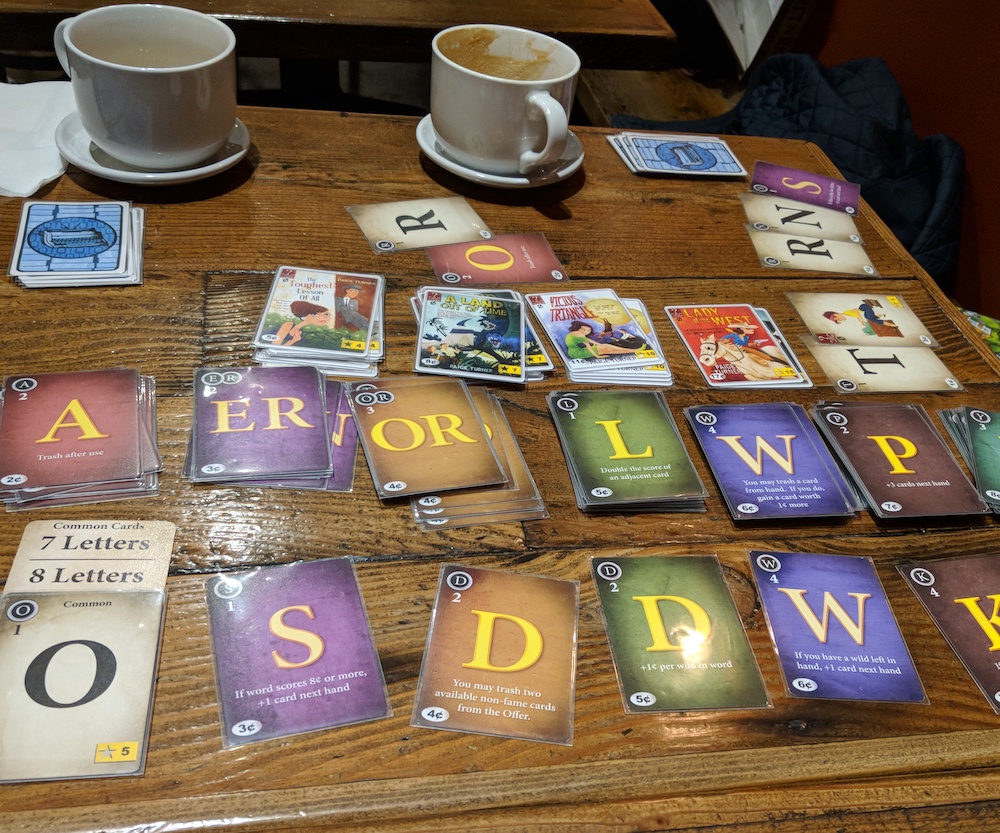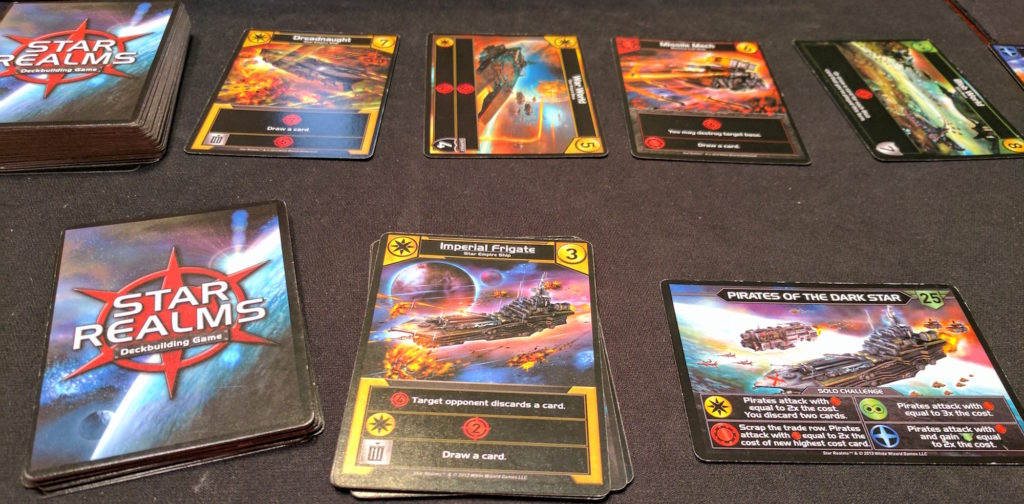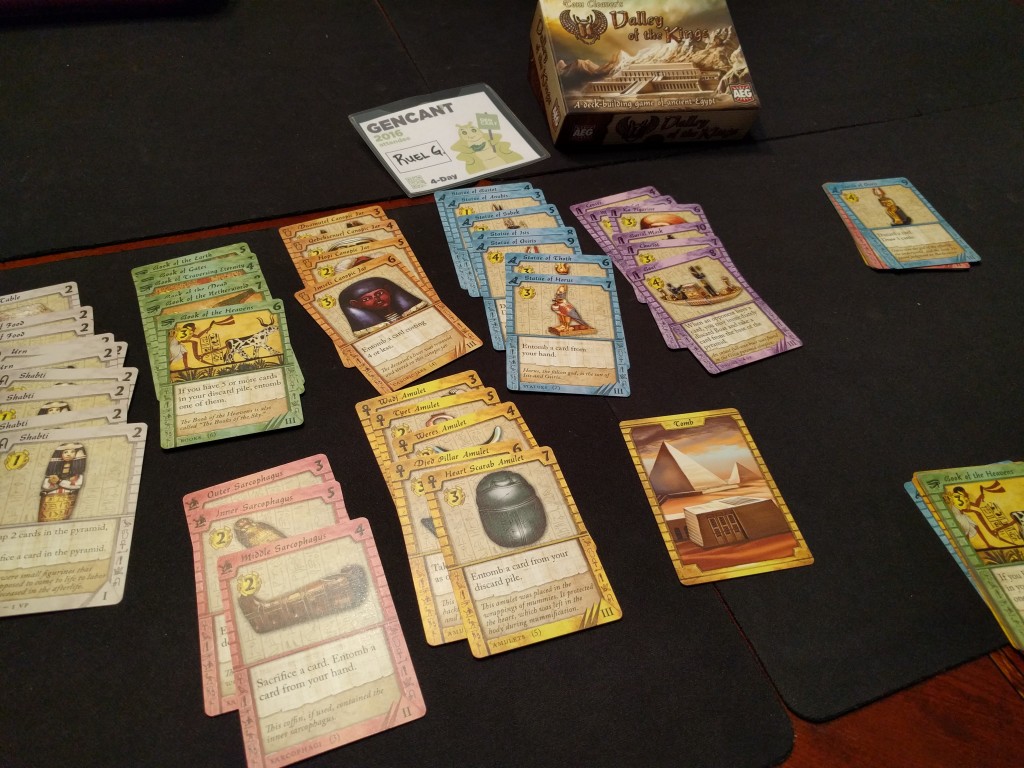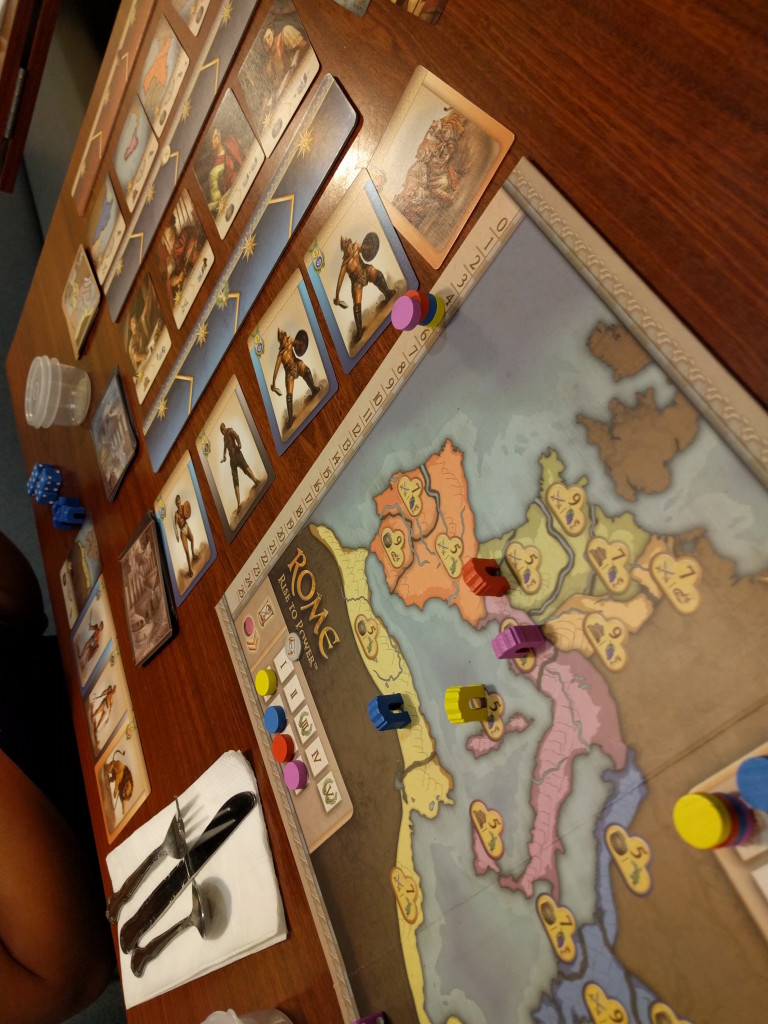I can’t believe we’re almost done with the Clank! League. Join us when we go live this Tuesday at 1pm PST over on Twitch for the final game! In the meantime, here’s last week’s game.
deck builder
Clank! League Week 4
Here’s the replay of Clank! League Week 4. This is my favorite episode so far. 🙂
Clank! League Week 3
Yesterday’s Clank! League live stream was a blast! Here’s the replay:
Clank! League Week 2
From yesterday’s live stream at Renegade Game Studios: Will Victor and I beat Gary in Clank!? Or will Gary repeat as the Week 1 champion? Watch below to find out!
Clank! League Week 1
November Writing Challenge Day 15: Clank! Legacy: Acquisitions Incorporated (no spoilers)
I’m blogging every day this month. Some will be game-related, but this challenge is different than my most recent play-a-game-and-blog-about-it challenge. I’m writing a single post every day: no topic guidelines, with some posts being a collection of random thoughts. Click here to read yesterday’s post.
I haven’t had much luck with legacy games. I played a friend’s copy of Charterstone once and I enjoyed it, but not enough to join in for the rest of the campaign.
I’m nearly finished with Pandemic Legacy: Season 1 and I’ve got my fingers crossed for finishing the campaign by the end of the year. My Pandemic Legacy group consists of me, my stepdaughter, and her boyfriend. We only play when she’s back from school, her boyfriend visits, and we’re not doing anything else. I’ve never made it a priority to play the game; it’s more important to me to spend time together, chatting, sharing a meal, or talking about what she’s learning in school. But it’s a great game and I can’t wait to finish it since I plan on hanging up the map in our game room.
I was so fired up to get Mechs vs. Minions when it was released. It’s still the best board game deal I’ve ever scored, thanks to Riot Games’ “gift” to the board gaming community: $75 (and free shipping!) for a game that should easily be $200+. Unfortunately, my three-person group only got to the third game when one player decided he didn’t like programming games. I was bummed since I liked the game up until that point and figured the best was yet to come. We were about to unlock the boss monster, too! Ugh. It’s sat on my shelf ever since, but after I finish Clank! Legacy: Acquisitions Incorporated I’m going to make it my mission to finish Mechs vs. Minions.
Which brings me to Clank! Legacy: Acquisitions Incorporated. I’m a big fan of Clank! and all of its expansions and last year I wrote an overview of the series. When the Game the Game production team asked me to play Clank! on an upcoming episode, I was thrilled. We played Clank! with the Acquisitions Incorporated Upper Management Pack and the Temple of the Ape Lords expansion. You can watch the episode above or here.
It was a fun episode to film and it confirmed how much I enjoy the game. While deck-building isn’t my favorite game mechanism, I do like when board games feature deck-building, like Trains or Tyrants of the Underdark. Clank! ranks right up there, too. I love how it combines deck-building with press-your-luck and dungeon crawling.
Clank! Legacy: Acquisitions Incorporated has everything I love about the base game and expansions: it’s a race to get your artifact and get out, all while battling monsters and grabbing gold, market items, and more. Without giving away anything, the legacy game has been a fantastic experience so far. My group of four players finished our fifth game tonight and after every game so far we’ve had the same reaction: we can’t wait to see what’s next.
The game has been so good, in fact, that two of the guys in my group ordered their own copies. I’m curious to see how everything in our completed campaign compares to their other games, from the different paths we took to the way characters developed.
Big thanks to Renegade Game Studios for the copy of Clank! Legacy: Acquisitions Incorporated.
November Daily Game Challenge: Paperback
This is Day 26 of my Game-and-Blog-Every-Day-in-November Challenge. Search my blog for “Daily Game Challenge” for previous entries.
Paperback
I love word games, from Scrabble to Word on the Street. Paperback is one of my favorites, since it’s basically a mash-up of Scrabble and Dominion.
The game is played entirely with cards and in true deck-building fashion you draw five cards on your turn and try to spell a word. You tally the money on the cards you use to spell the word and use that to buy better cards worth more money. Some cards have special abilities that trigger when you spell with them, from drawing extra cards to gaining extra money. You’ll eventually have enough to buy the “books,” which are victory point cards like the Provinces, etc., in Dominion.
Paperback is a solid word game, one that I thoroughly enjoy every time I play it. The standalone sequel, Hardback, is more of a “gamer’s game” in that it introduces “factions” and other ways to combo your cards. While I like Hardback, it’s actually less of a word game than Paperback. I’ll play either one, but if I want a pure word-building game, then Paperback is my choice.
Every Night Is Game Night: Star Realms
I’m playing a board game every day this month and blogging about it (I did a similar challenge last year). Feel free to join me during my Every Night Is Game Night: My Daily Play & Blog Challenge. And tweet me with what you’re playing these days!
Star Realms is one of my favorite deck builders for so many reasons: it’s fast, it’s compact, it’s cheap, and, best of all, it has the kind of player interaction that other deck builders lack.
Players start with the same basic deck of spaceships: 8 Scouts (worth 1 money each) and 2 Vipers (worth 1 combat strength each). A row of five cards for purchase are laid out and any time one is bought, another card from the deck replaces it. Each player starts with 50 Authority (hit points) and any combat dealt out by a player will be assessed to their opponent.
What I love about Star Realms is how fast the action ramps up. The four factions in the game offer various abilities and bonuses when played in combinations. Better spaceships can be bought and outposts and bases can be used for additional protections from an opponent’s attack. It’s fun figuring out how each faction behaves: Blobs bring the most fire power while the Trade Federation can heal those precious Authority points.
Tonight I played one of the solo scenarios from the Colony Wars expansion: Pirates of the Dark Star. Solo play is like a normal two-player game, but for the dummy player, you’ll trash one card and draw one card. There are set actions for each of the four factions and whichever faction is drawn will determine the action. For example, draw a Blob faction and you’re hit with damage equal to three times that card’s cost.
The solo scenario seems easy, but that damage piles up quickly. Even with the standard starting Authority of 75 vs the dummy player’s 25, it’s easy to lose and any wins are usually close. Tonight I got the better of those pirates, winning by 18, but it could’ve easily gone the other way.
GenCant 2016 Day 1: Egypt and Rome
Day 1 of Gen Con was today and it looked awesome (although I have no desire to be in this). I loved seeing all of my online gaming buddies posting photos and reporting the latest and greatest from the con.
Valley of the Kings
It was also Day of GenCan’t 2016 and I participated in the #GenCantSoloCon by playing a solitaire game of Valley of the Kings. I’ve played this deckbuilder several times solo and I enjoy it as a get-your-highest-score game. Set in ancient Egypt, it’s a deck builder with set collection, in which you only score points by putting cards in your tomb (trashing cards) and you earn more points for collecting similar items. This sets up interesting choices throughout the game: do you play your card for its money value, its action, or trash it to start accumulating points?
Valley of the Kings is one of two deck builders I recommend to Dominion fans (the other being Trains).
Rome: Rise to Power
After my solo game, I went to my Thursday night gaming group and I was able to get Rome: Rise to Power to the table. I’ve had the game for a few months and have been itching to play. Unfortunately, it’d been awhile since I’d gone through the rulebook (which isn’t exactly the easiest to follow), so there were a few pauses during the game to clarify some points. I’m usually pretty good at explaining games (I’m the designated rules guy during family game night), but I wasn’t at my best tonight. Thankfully, my gaming buddies are smart enough to figure out things on their own and we were able to play the game within the suggested time (45 minutes).
Rome: Rise to Power is a game that combines dice allocation, card drafting, set collection, area control game with variable player powers. Players are in ancient Rome trying to use its military to win regions throughout the Roman Empire, win influence with senators, and put on the best arena battles.
The dice allocation system is unique and it’s what appealed to me most when I’d heard about it. Yes, there’s luck involved with dice (duh), but there are several ways to mitigate the luck factor, mainly through the special powers each player earns through their combinations of senators and regions won. The third way to earn points, through the arena battles, is sort of wacky, but somehow it works: you buy cards to build a poker-like hand and play them after rounds three and five (the final round). So, three barbarians and two beasts are the “Battle Royale,” which is a full house in poker, and there other hands that score.
The overall consensus was okay. I liked it and agreed with two of my buddies; we’d like to play it again now that we have a better understanding of the game. The fourth guy didn’t care for it, but I’m thankful that they were all up for playing. I’ve got more than a few games in my collection that I haven’t played so it was good to scratch this one off the list.




